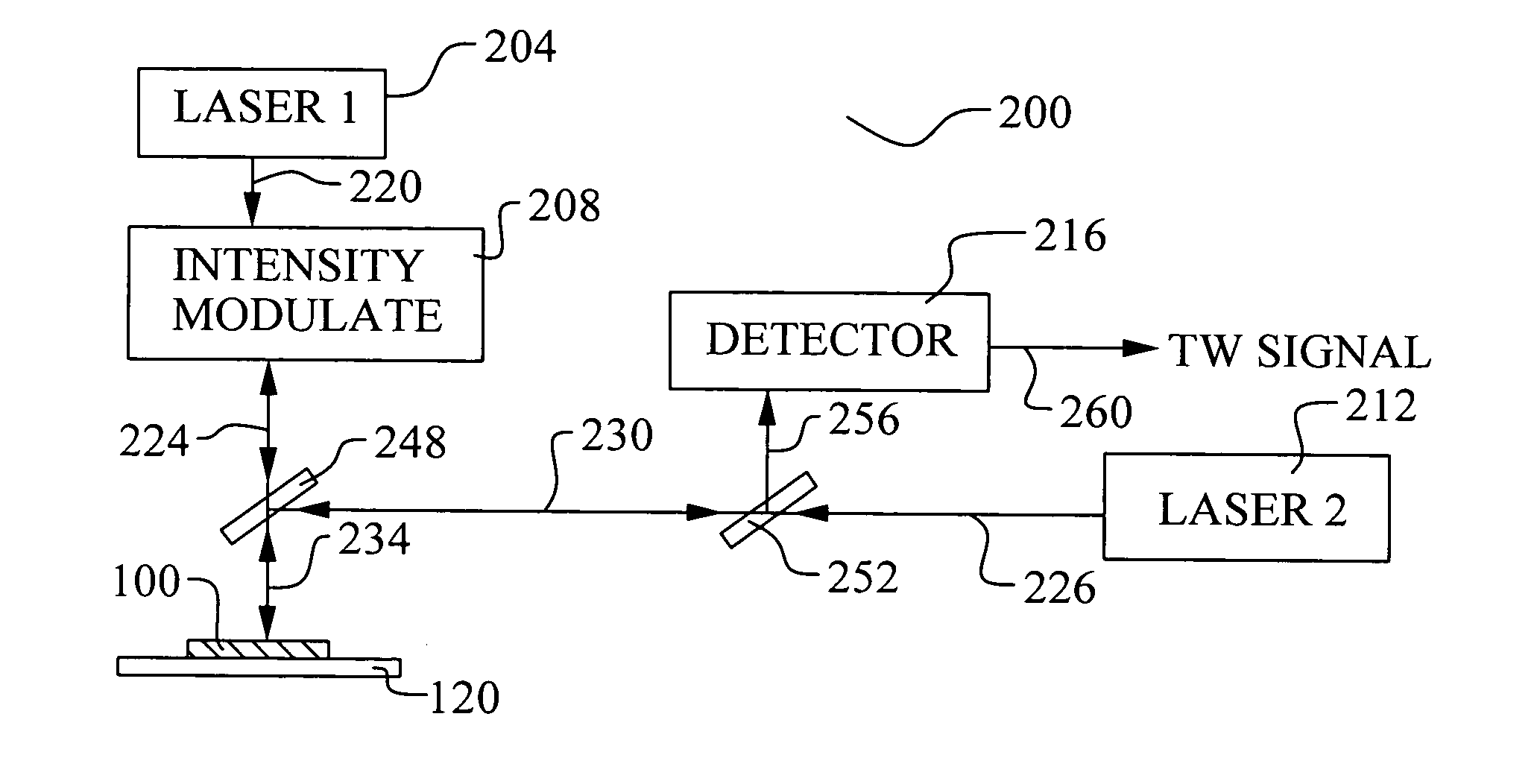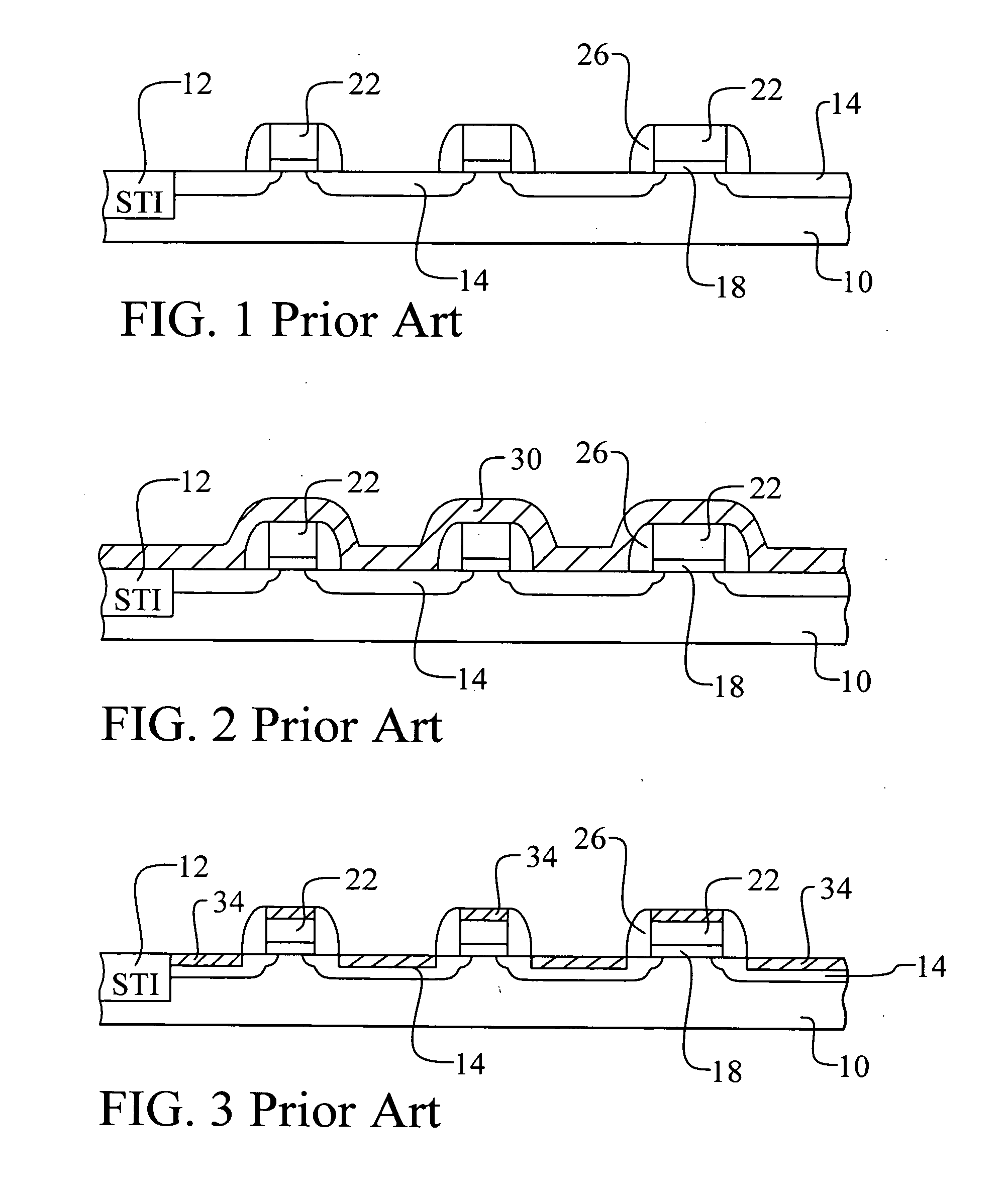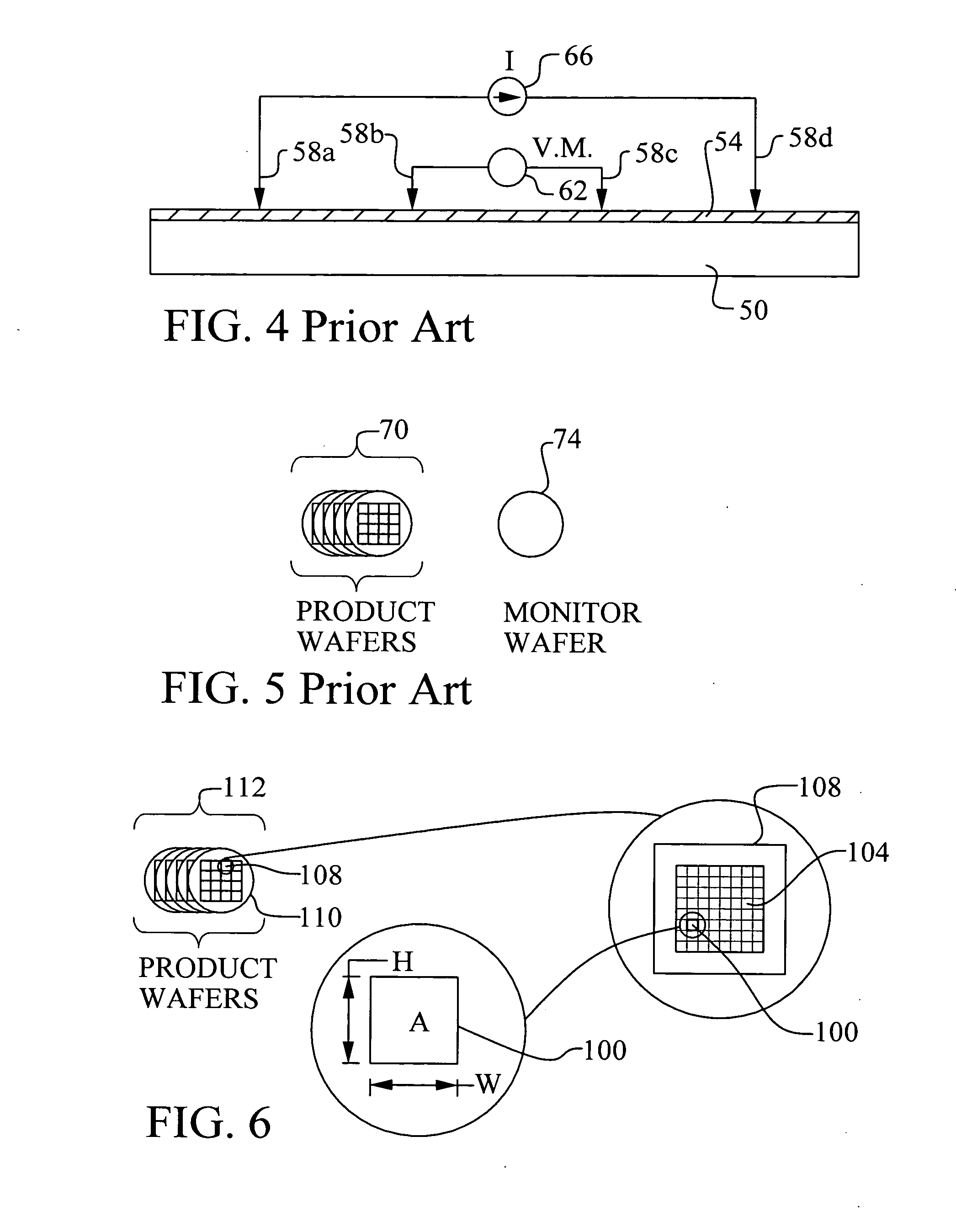Method to monitor silicide formation on product wafers
a technology of product wafers and silicides, applied in electrical testing, electronic circuit testing, instruments, etc., can solve the problems of low production efficiency, low efficiency, and high cost of the present method of metal silicide monitoring
- Summary
- Abstract
- Description
- Claims
- Application Information
AI Technical Summary
Benefits of technology
Problems solved by technology
Method used
Image
Examples
Embodiment Construction
[0023] The preferred embodiments of the present invention disclose a method to monitor the metal silicide process in the manufacture of an integrated circuit device. An optical measurement system is used to derive an electronic signal from product wafers. This electronic signal linearly corresponds to sheet resistance and is used in the present invention as a means of monitoring the metal silicide process. It should be clear to those experienced in the art that the present invention can be applied and extended without deviating from the scope of the present invention.
[0024]FIGS. 6 through 10 illustrate the preferred embodiment of the present invention. Several important features of the present invention are shown and discussed below. Referring particularly to FIG. 6, a new method for monitoring metal silicide sheet resistance is shown. In this method, the measurement is performed via an optical measuring system that measures the sheet resistance on the product wafers 112. Each prod...
PUM
| Property | Measurement | Unit |
|---|---|---|
| surface area | aaaaa | aaaaa |
| area | aaaaa | aaaaa |
| width | aaaaa | aaaaa |
Abstract
Description
Claims
Application Information
 Login to View More
Login to View More - R&D
- Intellectual Property
- Life Sciences
- Materials
- Tech Scout
- Unparalleled Data Quality
- Higher Quality Content
- 60% Fewer Hallucinations
Browse by: Latest US Patents, China's latest patents, Technical Efficacy Thesaurus, Application Domain, Technology Topic, Popular Technical Reports.
© 2025 PatSnap. All rights reserved.Legal|Privacy policy|Modern Slavery Act Transparency Statement|Sitemap|About US| Contact US: help@patsnap.com



